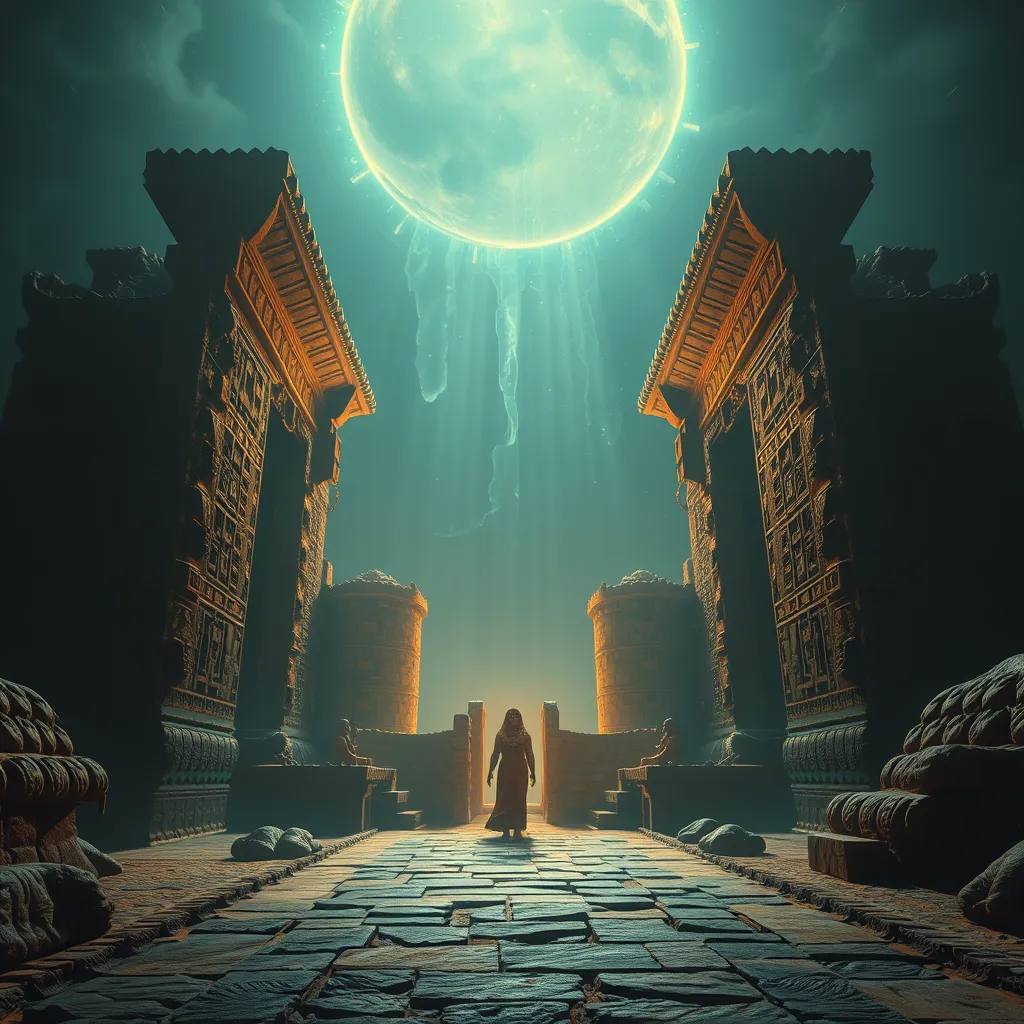The Duat: The Intersection of the Physical and Spiritual Worlds
I. Introduction
The Duat, often referred to as the realm of the dead in ancient Egyptian mythology, represents a complex and multifaceted belief system that embodies the intersection of the physical and spiritual worlds. This mystical underworld plays a crucial role in the journey of the soul after death, serving as a transitional space where the deceased confronts various trials and ultimately seeks a place among the gods.
In ancient Egyptian belief systems, the Duat was not merely a place of darkness and despair; rather, it was a vital component of the cosmic order, reflecting the duality inherent in existence. This article will explore the historical context, geographical features, deities, and the soul’s journey through the Duat, while also examining its modern interpretations and cultural significance.
II. Historical Context of the Duat
The origins of the Duat can be traced back to early Egyptian mythology, where it was depicted as a shadowy realm that existed beneath the earth, often associated with the cycle of life, death, and rebirth. As ancient Egyptian beliefs evolved, so too did the concept of the Duat, adapting to the changing religious landscape of society.
Key texts such as the “Book of the Dead” and the “Pyramid Texts” provide invaluable insights into the nature of the Duat and its significance in the afterlife. These texts offered guidance to the deceased, detailing rituals and spells meant to assist in navigating the challenges of the Duat and ensuring a safe passage to the realm of the gods.
III. The Geography of the Duat
The Duat is often depicted as a vast, complex landscape filled with diverse geographical features. This underworld is characterized by:
- Dark waters and rivers that symbolize the boundary between life and death
- Deserts representing the trials and tribulations of the soul
- Fields of reeds, echoing the lush landscapes of Egypt, signifying rebirth
Each location within the Duat holds symbolic significance, often mirroring the physical world. The juxtaposition of familiar elements alongside surreal and otherworldly features serves to highlight the duality of existence and the transformative journey of the soul.
IV. Deities and Entities of the Duat
The Duat is populated by a pantheon of gods and goddesses who preside over this realm, each playing a crucial role in guiding souls and maintaining cosmic order. Some of the major deities associated with the Duat include:
- Osiris: The god of the afterlife, who judges the souls of the deceased.
- Anubis: The god associated with mummification and the protection of graves.
- Isis: A goddess who assists in the resurrection of Osiris and guides souls.
These deities interact with human souls throughout their journey, offering guidance, protection, and sometimes challenges that must be overcome to achieve eternal life.
V. The Journey of the Soul Through the Duat
The journey of the soul through the Duat is a central theme in ancient Egyptian belief systems. Upon death, the soul embarks on a transformative journey characterized by several key steps:
- The Departure: The soul separates from the body and begins its descent into the Duat.
- Trials and Challenges: The soul encounters various obstacles, including dangerous creatures and deceptive entities.
- The Weighing of the Heart: The soul’s heart is weighed against the feather of Ma’at, the goddess of truth and justice.
The “Weighing of the Heart” ceremony is particularly significant, as it determines the fate of the soul. A heart that balances with the feather signifies a life of virtue, leading to eternal life, while a heavier heart indicates wrongdoing, resulting in obliteration.
VI. Symbolism and Spiritual Significance
The Duat serves as a powerful metaphor for transformation and renewal. It encapsulates the idea that death is not an end but a transition into another phase of existence. The journey through the Duat symbolizes the struggles one must face to achieve spiritual growth and enlightenment.
Additionally, dreams and visions are believed to connect individuals with the Duat, allowing them to gain insights into their lives and destinies. This connection fosters a sense of communal spirituality, as individuals seek to understand their place in the cosmos through the lens of the Duat.
VII. Modern Interpretations and Cultural Impact
The influence of the Duat extends beyond ancient Egypt, permeating contemporary spiritual practices and beliefs. Many modern spiritualists draw upon the symbolism of the Duat to explore themes of death, rebirth, and the afterlife. Furthermore, the representation of the Duat in art, literature, and media continues to capture the imagination of audiences worldwide.
Examples of the Duat’s representation include:
- Artistic depictions in ancient temples and tombs
- Literary references in modern novels and poetry
- Film and television portrayals that explore themes of the afterlife
The continued relevance of the Duat in discussions of life after death highlights the enduring human fascination with the mysteries of existence and the spiritual journey.
VIII. Conclusion
In conclusion, the Duat represents a profound intersection of the physical and spiritual worlds, serving as a vital component of ancient Egyptian belief systems. Its significance in bridging the realms of life and death reflects the duality inherent in existence, while the rich tapestry of mythology surrounding the Duat continues to intrigue and inspire.
As we reflect on the teachings and symbolism of the Duat, we are invited to explore the ancient beliefs that shaped civilizations and consider their modern implications. The Duat remains a powerful reminder of the transformative journey of the soul and the eternal quest for understanding and meaning in the human experience.




